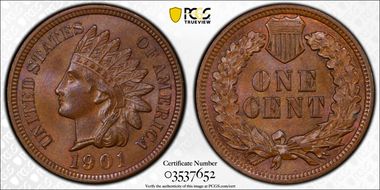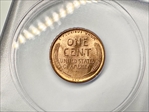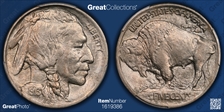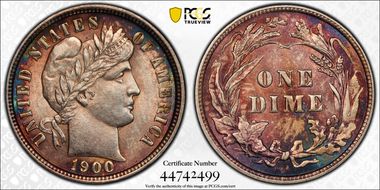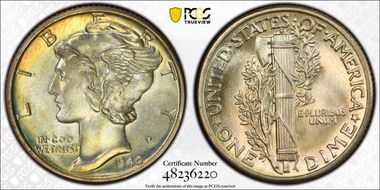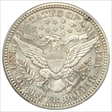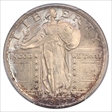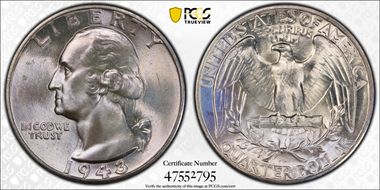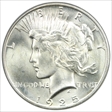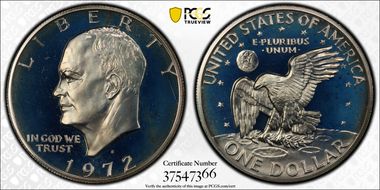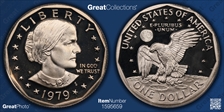The River Hills Collection - 20th Century w/ Type Variations 的钱币相册
A touch of the original factory finish peeks through this mostly chocolate brown Indian Head cent. Good strike with clear "LIBERTY", headband definition, and hair definition. "9" in 1901 is a little rounded like maybe the date was re-punched, but rest of words are very sharp.
I bought this because it was nice, but also as a reminder of my love for Back to the Future.
I bought this because it was nice, but also as a reminder of my love for Back to the Future.
While this is a perfectly fine example, my MS-67 1943-P Steel Cent has a die clash and some die cracks that add extra visual interest. Unfortunately it's in an NGC holder, so it can't be added here to show.
While this is a perfectly fine example, my MS-67 1943-P Steel Cent has a die clash and some die cracks that add extra visual interest. Unfortunately it's in an NGC holder, so it can't be added here to show.
Good strike, subtle gold and blue toning on obverse. Full stars and kernels of left cob corn show.
Good strike, subtle gold and blue toning on obverse. Full stars and kernels of left cob corn show.
Good strike, subtle gold and blue toning on obverse. Full stars and kernels of left cob corn show.
Good strike, subtle gold and blue toning on obverse. Full stars and kernels of left cob corn show.
One of my favorite things about the Buffalo Nickel is that it looks as if it's chiseled from stone. So even though there can often be a less-than-ideal strike, like with nearly all nickels, they feel organic and natural. Softer strikes on other coins with a more precise design suffer, like the Jefferson nickel, but James Earle Fraser's design benefits from the look. There's a slight die rotation, but nothing spectacular. There is some subtle toning and there is decent luster on this coin.
One of my favorite things about the Buffalo Nickel is that it looks as if it's chiseled from stone. So even though there can often be a less-than-ideal strike, like with nearly all nickels, they feel organic and natural. Softer strikes on other coins with a more precise design suffer, like the Jefferson nickel, but James Earle Fraser's design benefits from the look. There's a slight die rotation, but nothing spectacular. There is some subtle toning and there is decent luster on this coin.
One of my favorite things about the Buffalo Nickel is that it looks as if it's chiseled from stone. So even though there can often be a less-than-ideal strike, like with nearly all nickels, they feel organic and natural. Softer strikes on other coins with a more precise design suffer, like the Jefferson nickel, but James Earle Fraser's design benefits from the look. There's a slight die rotation, but nothing spectacular. There is some subtle toning and there is decent luster on this coin.
I love all 1979 coins, so that's why I bought this. But my first-year-of-issue 1938-D Jefferson, graded MS-67, in an NGC holder is by far more impressive.
I love all 1979 coins, so that's why I bought this. But my first-year-of-issue 1938-D Jefferson, graded MS-67, in an NGC holder is by far more impressive.
I love all 1979 coins, so that's why I bought this. But my first-year-of-issue 1938-D Jefferson, graded MS-67, in an NGC holder is by far more impressive.
I love all 1979 coins, so that's why I bought this. But my first-year-of-issue 1938-D Jefferson, graded MS-67, in an NGC holder is by far more impressive.
Beautiful red, green, blue, and purple toning that accentuates the devices on both the obverse and reverse. Nice luster overall. The very first coin I ever bought was a Barber Dime, so these are very special to me.
Pretty gold, blue, and green toning on the edges of both of obverse and reverse. It's also a really nice strike with good luster. Personally I think it's worthy of a Full Bands designation, but I think it's a pretty coin no matter what.
The blue toning is what drew me to this particular quarter. I love it on any coin and, if you look through some of my others, you'll see what I see.
This was the first coin of the US Mint’s new 50 State Quarters Series, released on Jan. 4, 1999. The legislation that authorized the state quarter program in 1997 was introduced by Delaware Representative Mike Castle. Each state’s governor was responsible for submitting concepts to the mint, but they had leeway on how they came to those selections. Delaware’s Governor asked residents to submit ideas to the Delaware Arts Council for review. Once the US Mint finalized three potential designs for the reverse, Delawareans were asked to vote on their favorites. Of the 1,519 votes cast, the Caesar Rodney reverse, engraved by William Cousins and based on artist Eddy Seger’s submission, received 948. Both the final design and the original submission were based on James Edward Kelly’s sculpture of Caesar Rodney that stood in Wilmington’s Rodney Square between 1923 until 2020. Mr. Seger taught at art at Caesar Rodney High School in Camden, DE at the time. When he learned that Delawareans were being asked to submit ideas for the new coin, he made it an art project. Of the 340 submissions to the Arts Council, 39 came from his students. The ceremonial first strike of the new series took place at the Philadelphia Mint on Dec. 7, 1998, the anniversary of the state’s ratification of the Constitution.
This was the first coin of the US Mint’s new 50 State Quarters Series, released on Jan. 4, 1999. The legislation that authorized the state quarter program in 1997 was introduced by Delaware Representative Mike Castle. Each state’s governor was responsible for submitting concepts to the mint, but they had leeway on how they came to those selections. Delaware’s Governor asked residents to submit ideas to the Delaware Arts Council for review. Once the US Mint finalized three potential designs for the reverse, Delawareans were asked to vote on their favorites. Of the 1,519 votes cast, the Caesar Rodney reverse, engraved by William Cousins and based on artist Eddy Seger’s submission, received 948. Both the final design and the original submission were based on James Edward Kelly’s sculpture of Caesar Rodney that stood in Wilmington’s Rodney Square between 1923 until 2020. Mr. Seger taught at art at Caesar Rodney High School in Camden, DE at the time. When he learned that Delawareans were being asked to submit ideas for the new coin, he made it an art project. Of the 340 submissions to the Arts Council, 39 came from his students. The ceremonial first strike of the new series took place at the Philadelphia Mint on Dec. 7, 1998, the anniversary of the state’s ratification of the Constitution.
The Walking Liberty is one of my favorite coin designs and this example's sparking luster makes it one of the standouts of my collection.
The Walking Liberty is one of my favorite coin designs and this example's sparking luster makes it one of the standouts of my collection.
Attractive pastel blues, deep blue greens, gold, rose, and lavender colors on obverse. Lavender and gold on reverse.
Attractive pastel blues, deep blue greens, gold, rose, and lavender colors on obverse. Lavender and gold on reverse.
I knew I had to have this as soon as I saw it. I likely paid more than I should have for this, but the year, variety, and condition were all right for me. Building a collection that's personal to you and that you feel good about is important.
I knew I had to have this as soon as I saw it. I likely paid more than I should have for this, but the year, variety, and condition were all right for me. Building a collection that's personal to you and that you feel good about is important.
This coin has so much luster that it's like it has its own light source. It's beautiful. The California pedigree is cool, but that's just a part of the coin's story.
This coin has so much luster that it's like it has its own light source. It's beautiful. The California pedigree is cool, but that's just a part of the coin's story.
Excellent blue and green toning. Like my 1979-S Type 2 SBA, the Apollo 11 insignia is enhanced by the color.
Has some light blue toning towards top of obverse. Otherwise a pretty basic Eisenhower dollar.
Has some light blue toning towards top of obverse. Otherwise a pretty basic Eisenhower dollar.
This was clearly part of someone else's collection being sold because my 1973-S Silver Eisenhower was one auction listing number different AND the PCGS cert numbers are sequential. I found these two separately and I felt like they should be kept together, so I kept them together. That story in my head was enough to buy this and I'm happy about my decision. I have a nicer Type 2, but it’s in an NGC holder.
My first year of issue 1979-S Type 2 is much more exciting to look at, with blues and golds, but this example is more pristine.
My first year of issue 1979-S Type 2 is much more exciting to look at, with blues and golds, but this example is more pristine.




















